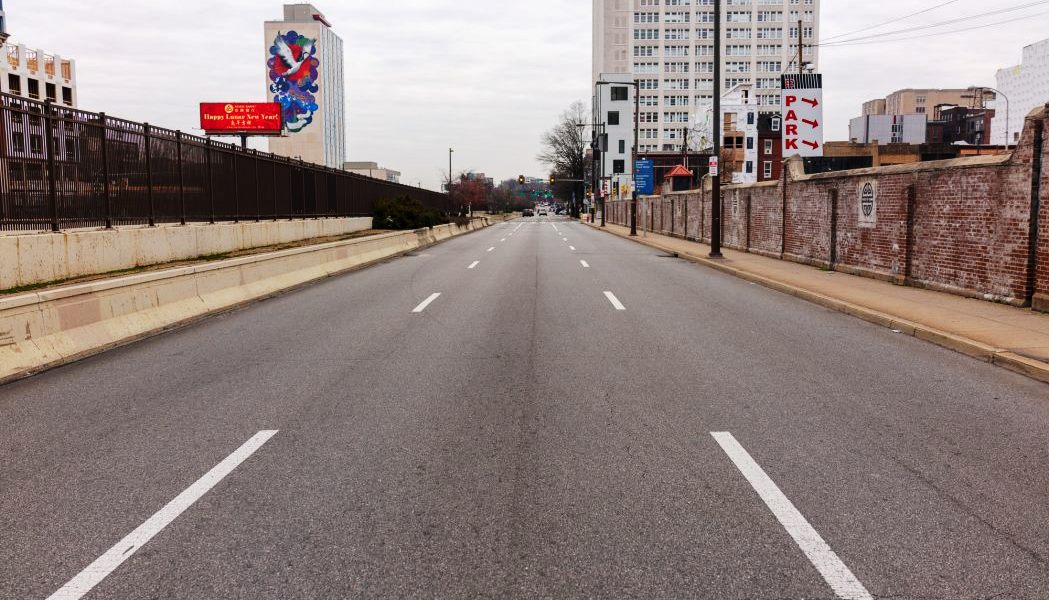On March 8, 2023, the City of Philadelphia, in partnership with the Philadelphia Chinatown Development Corporation (PCDC), initiated a project to evaluate ways to reconnect the Chinatown community, which was separated by the horrendously bad planning of the Vine Street Expressway.
Decades in the making, the concept study, named the Chinatown Stitch, will gather community input to reimagine the expressway with a “cap.”
A cap is a bridge, platform or structure built over a limited access highway, which both creates new usable property and reconnects existing neighborhoods. This forms huge revitalization potential, via new uses such as parks, open space, or even commercial and residential redevelopment.
 As documented in the 2020 book, RECONOMICS: The Path To Resilient Prosperity, reconnecting places is often the most powerful and cost-effective strategy for revitalization.
As documented in the 2020 book, RECONOMICS: The Path To Resilient Prosperity, reconnecting places is often the most powerful and cost-effective strategy for revitalization.
A new grant, made possible by the U.S. Department of Transportation’s visionary Reconnecting Communities Pilot Program (RCP), will enable the City, PCDC and its partners to accelerate the planning process.
“After more than three decades of harm and displacement caused by the Vine Street Expressway, the Reconnecting Communities grant is a beacon of hope for the Chinatown community,” said John Chin, Executive Director for PCDC.
“The funding from this grant will provide concrete change for Chinatown’s built environment, allowing for businesses, residents and future generations of our marginalized community to flourish,” he added.
Since the 1960s, the Vine Street Expressway has been greeted with significant community opposition.
Upon completion of construction in 1991, the expressway intensified the social and economic disconnect between the Chinatown and Chinatown North neighborhoods.
The community engaged in numerous neighborhood plans and studies over the past twenty years.
“The initial phase of the Chinatown Stitch project will study ways to reconnect the Chinatown neighborhood across the Vine Street Expressway I-676. OTIS is proud to lead this important work to repair historic harms caused by the highway construction, which physically divided Chinatown and heightened traffic safety and environmental justice issues,” said Deputy Managing Director for Transportation, Mike Carroll.
The planning project costs $4 million and includes the $1.8 million grant award from the RCP Program. Matching funds totaling $2.2 million were offered by the City, PennDOT, the John S. and James L. Knight Foundation and a number of private local donors.
Knight Foundation’s Philadelphia Director, Ellen Hwang, heralded the project. “We are excited to partner with the leaders and residents of Chinatown who have been seeking ways to address the problems caused by the expressway for decades. We look forward to supporting the engagement process for this transformational opportunity that places people at the center of community decisions,” she exclaimed.
“The City is grateful to our legislative and project partners for helping us secure $1.8 million in funding for this initial phase, and to our local partners: PCDC, local philanthropies, and PennDOT,” continued Carroll.
The U.S. Department of Transportation’s RCP Program was established by the Bipartisan Infrastructure Law. It provides funding to repair communities from the economic and social disconnection created by transportation infrastructure, such as large highway construction projects.
Providing Feedback on the Concept Study:
The project team is committed to hearing from the public and the community. Residents are encouraged to fill out this survey, also available in Spanish and simplified Chinese.
The feedback will directly influence the proposed designs developed in the second phase of the Concept Study. Public engagement will be a fundamental part of this process.
The Study will have two distinct phases:
- Phase 1: Seek public input to develop a project vision and establish project goals based on what the community wants to see; identifying preferred locations and types of capping; and prioritizing uses of the capped area.
- Phase 2: Use input from the first phase to develop a series of potential designs for capping locations. The project team will work with the community to identify a preferred design approach that is consistent with the vision and goals established in Phase 1.
In April, the project team will host a public visioning session to hear from the community about potential uses and locations for the capped area(s).
Additional pop-up events are planned throughout the spring and summer of 2023. A schedule will be available on the project website’s calendar of events.
Over the next few years, the grant funding will support public engagement, planning and engineering work.
These efforts will contribute toward future construction grant applications, as fundraising and project development continue.
The City hopes to start construction by 2028, depending on funding availability and the complexity of concepts chosen by the community.
Photo courtesy of City of Philadelphia.

